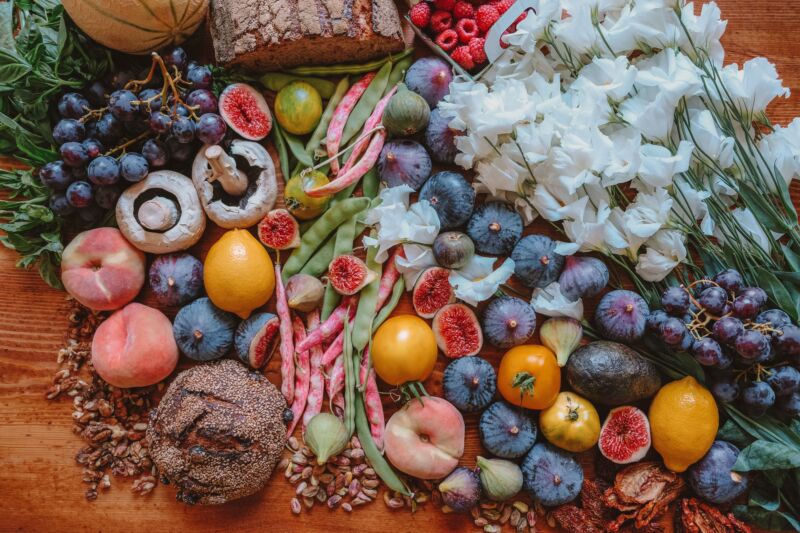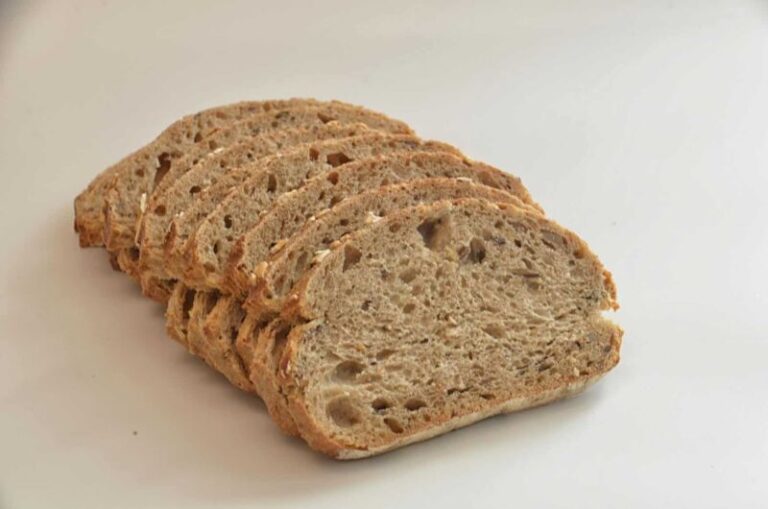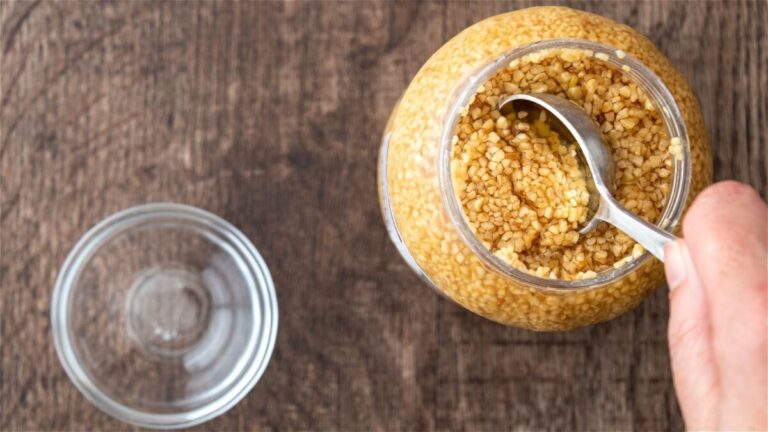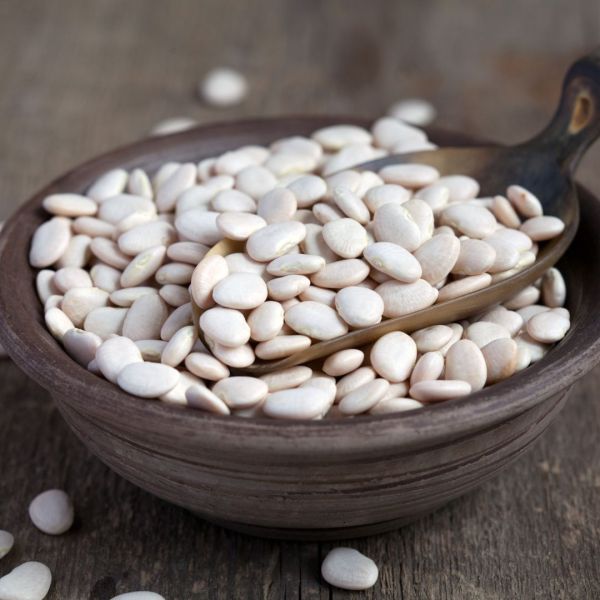The 15+ Fruits That Start with F
When it comes to exploring the diverse world of fruits, it’s always exciting to discover new varieties and expand our culinary horizons. In this article, we delve into a collection of fruits that all share one common trait – their names begin with the letter F. From the lesser-known to the widely enjoyed, these fruits bring unique flavours, textures, and nutritional benefits.
A comprehensive list of fruits starting with F can be valuable for food enthusiasts, chefs, and those looking to diversify their diets. It allows individuals to discover new fruits, learn about their origins, understand their taste profiles, and explore various ways to incorporate them into delicious recipes. Expanding our knowledge of fruits opens up opportunities for culinary experimentation and a broader understanding of the natural world.
Florida Cherry
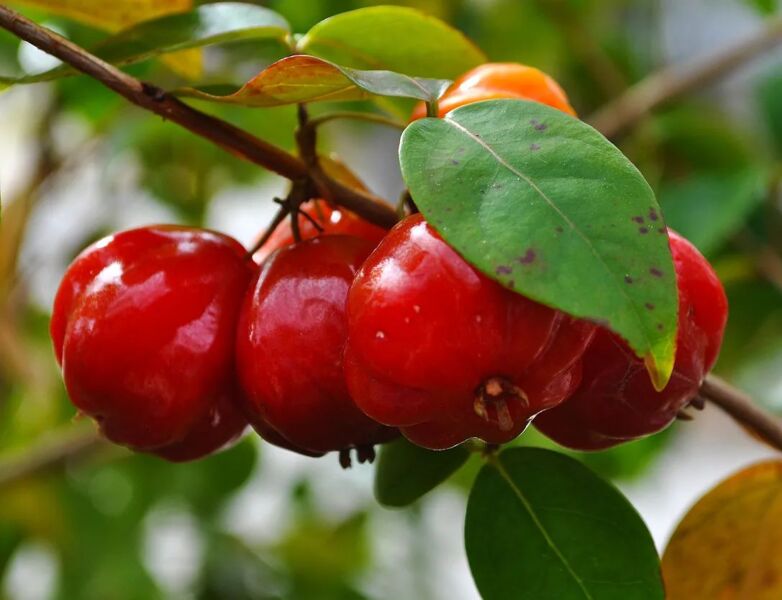
The Florida Cherry, scientifically known as Eugenia uniflora, is native to South America but is widely cultivated in Florida and other tropical regions. It is also called the Surinam Cherry, Cayenne Cherry, or Pitanga.
The Florida Cherry is a small, bright red fruit with thin skin and a distinctive tart flavour. Its flavour is a mix of sweet and sour with hints of citrus and pineapple.
Florida Cherries are primarily found in tropical and subtropical regions.
They’re rich in antioxidants, vitamin C, and many minerals, making them a nutritious food choice. They can be eaten fresh, in desserts, or flavorful jams and jellies.
Finger Lime
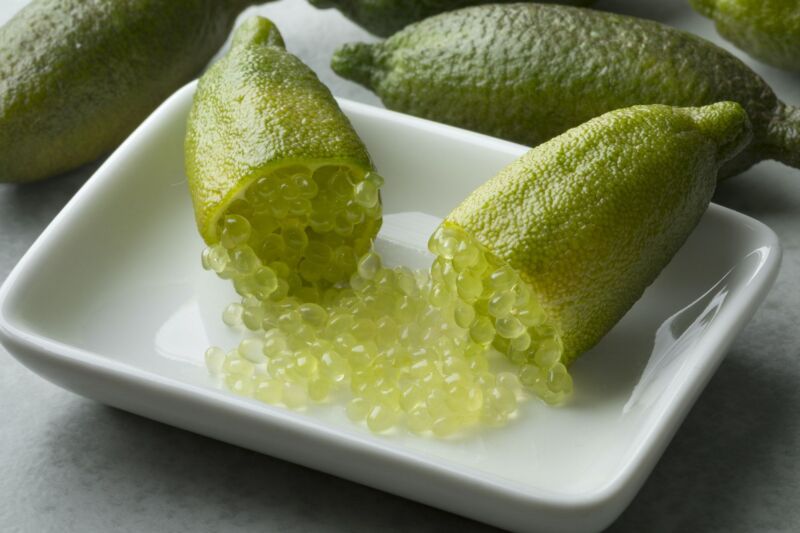
Finger Lime, scientifically known as Citrus australasica, is native to Australia and has gained popularity in the United States recently. It is often called “citrus caviar” due to its unique appearance and texture.
The Finger Lime’s most distinctive feature is its caviar-like pulp, which resembles tiny, delicate spheres bursting with tangy citrus juice. It comes in various colours, including green, yellow, and pink. The fruit’s rarity and delicate nature contribute to its relatively higher cost than other citrus varieties.
Finger Limes are prized for their vibrant taste and elegant appearance, making them a sought-after ingredient in savoury and sweet dishes. They add citrus flavour to salads, seafood, sushi, and desserts like sorbets and pastries. Their visually appealing nature also makes them a popular garnish.
Fuji Apples
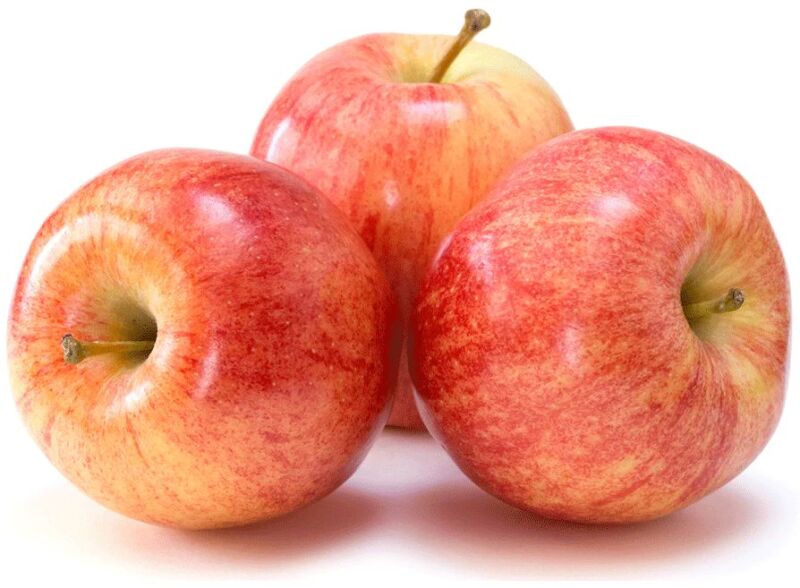
Fuji Apples, originating from Japan, have gained immense popularity worldwide for their crisp texture and sweet flavour. They are a cross between two American apple varieties, the Red Delicious and the Ralls Janet.
These highly versatile apples can be enjoyed in various forms – fresh, baked, or juiced. Their natural sweetness and firm texture make them an excellent choice for salads, pies, sauces, and apple cider.
When selecting Fuji Apples, look for firm ones with vibrant red or yellow-green skin. They can be stored in the refrigerator for up to several weeks. To prevent browning, coat-cut Fuji apples with lemon juice. Try baking them with cinnamon and honey for a delightful dessert or adding slices to a Waldorf salad for a burst of sweetness.
Fairchild Tangerines

Fairchild Tangerines are a crossbreed between a Clementine and a Ponkan Mandarin. They were developed by the United States Department of Agriculture and are named after the renowned horticulturist David Fairchild.
These tangerines have a vibrant orange colour and a sweet, tangy flavour. Their thin skin makes them easy to peel, making them a convenient and enjoyable snack.
While often used interchangeably, tangerines and mandarins are different. Tangerines are a type of mandarin orange known for their loose, easy-to-peel skin and sweet flavour. Mandarins encompass a broader category of citrus fruits, including various tangerine varieties.
False Mastic Fruit

The False Mastic Fruit, scientifically known as Sideroxylon foetidissimum, is an uncommon fruit native to the Florida Keys, the Caribbean, and Central America. Indigenous communities historically used it for medicinal purposes.
The False Mastic Fruit is edible but often avoided due to its sticky and gummy texture. The fruit’s flesh is typically sweet and aromatic, reminiscent of honey or molasses.
Despite its intriguing qualities, the False Mastic Fruit remains relatively obscure, with limited culinary applications. Recipes designed for this fruit are scarce, making it a hidden gem for adventurous culinary explorers.
Feijoa

Feijoa, also known as Pineapple Guava or Guavasteen, is native to South America but is widely cultivated in New Zealand, Australia, and parts of California.
Feijoa has a unique flavour profile, combining pineapple, guava, and mint notes. The fruit can be eaten raw, sliced into fruit salads, or used in various culinary creations, such as jams, jellies, and desserts. Its aromatic qualities also make it a popular ingredient in beverages, such as smoothies or cocktails.
Apart from their culinary uses, feijoa leaves are often used in herbal teas, infusing them with a fragrant and refreshing flavour. The fruit’s texture and taste make it an excellent addition to baked goods like muffins or cakes. For those seeking a taste of the tropics, feijoa sorbet or ice cream can offer a delightful and refreshing treat.
Forest Strawberries

Forest Strawberries, also known as Wild Strawberries or Alpine Strawberries, are a smaller and often more intensely flavoured variety than their garden counterparts. They belong to the Fragaria vesca species and are native to Europe and parts of Asia.
Forest Strawberries are significantly smaller than traditional strawberries, with a delicate sweetness and aromatic fragrance. While cultivated garden strawberries are bred for size and uniformity, forest strawberries offer a charmingly wild and natural appearance.
Forest strawberries boast similar health benefits to garden strawberries, rich in antioxidants, vitamins, and dietary fibre. They can be enjoyed fresh, used in jams, or added to desserts for flavour. Their smaller size also makes them perfect for garnishing pastries or cocktails.
Figs

Figs, originating from Western Asia and the Middle East, have a rich history dating back thousands of years. They are now widely cultivated in Mediterranean regions, California, and other suitable climates worldwide.
Figs are highly versatile and can be enjoyed fresh, dried, or as an ingredient in various dishes. Their natural sweetness pairs well with sweet and savoury flavours, making them a favourite addition to salads, cheese platters, desserts, and even savoury dishes like roasted meats.
Turkey, Egypt, and Algeria are among the leading fig-producing countries globally. These countries have favourable climates supporting the growth of high-quality figs exported worldwide.
Fibrous Satinash Fruit

Fibrous Satinash Fruit, scientifically known as Syzygium fibrosum, is an intriguing fruit in Indonesia and New Guinea. It belongs to the Myrtaceae family and is similar to other Syzygium genus fruits, such as the more well-known Syzygium cumini (Java Plum) and Syzygium samarangense (Wax Apple).
The Fibrous Satinash Fruit is known as “Buah Keranji” in Indonesia. While not widely recognized outside its native regions, it has culinary applications in traditional dishes and is sometimes used in jams, desserts, or as a flavouring agent in local cuisine.
The fruit’s fibrous texture makes it less desirable to eat fresh, but it can be transformed into delicious jams, jellies, or sweets. Its unique flavour adds depth and complexity to these preparations, giving a glimpse into the diverse range of fruits enjoyed in different cultural contexts.
Flatwoods Plum
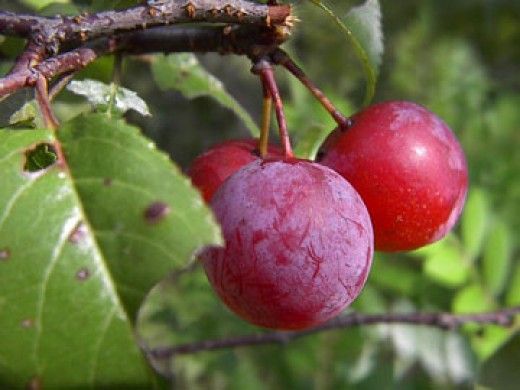
The Flatwoods Plum, also known as Wild Plum or Hog Plum, is a small, wild fruit native to the southeastern United States. While less widely available than commercial plums, they can sometimes be found at local farmers’ markets or foraged in suitable habitats.
Flatwoods Plums typically grow in wetland areas, along riverbanks, or in sandy soils. They are commonly found in states like Florida, Georgia, and Louisiana, where they thrive in the region’s specific ecosystems.
Though less common in mainstream markets, some farmers who specialize in native or heirloom fruits may offer Flatwoods Plums when they are in season. Checking local farmer’s markets or connecting with regional fruit enthusiasts can increase the chances of discovering these unique plums.
Fe’i Banana
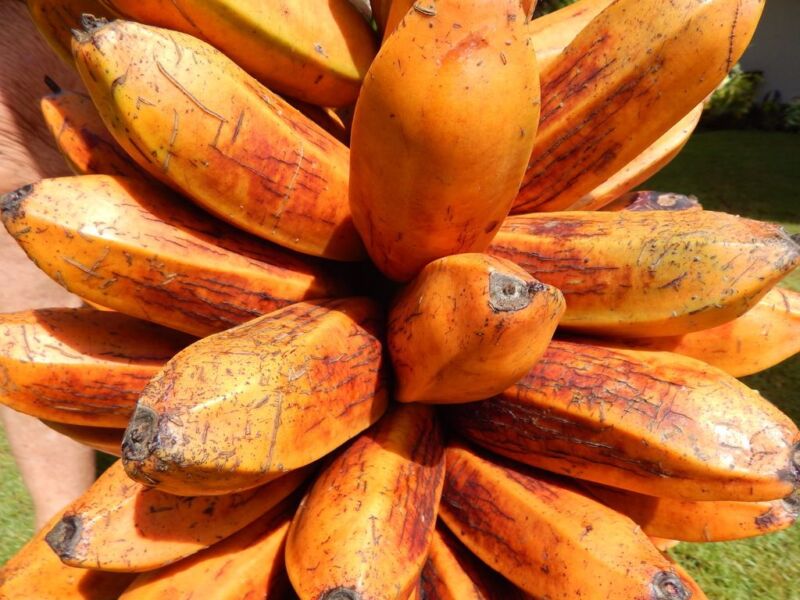
Fe’i Banana, also known as Highland Banana, is native to the Pacific Islands, particularly Papua New Guinea and surrounding regions. It is an important staple food for many indigenous communities in these areas.
Fe’i Bananas are smaller than the familiar Cavendish bananas, with a distinctively sweet flavour. They are usually cooked before consumption, either by boiling, roasting, or steaming. The cooking process brings out their natural sweetness and enhances their texture.
Fe’i Bananas have varying levels of sugar content, depending on the variety. Some are exceptionally sweet, making them perfect for desserts, while others have a milder sweetness that works well in savoury dishes. Fe’i Bananas can be used in cakes, fritters, stews or enjoyed as a flavorful snack.
Fascell Mango
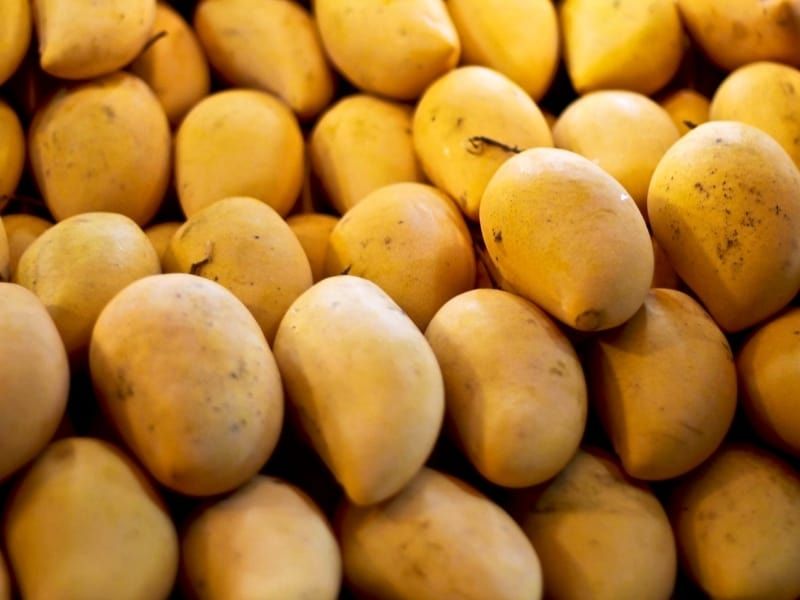
The Fascell Mango, also known as the Fairchild Mango, is a hybrid variety created by the famous horticulturist David Fairchild. It originated from a cross between the Haden and Philippine mango varieties and was developed at the Fairchild Tropical Botanic Garden in Florida.
The Fascell Mango is highly regarded for its superior taste and quality. It has become a popular variety not only in Florida but also in other mango-growing regions worldwide. Its sweet, juicy flesh and tropical aroma make it a favourite for eating fresh, juicing, or using in mango-based recipes.
Mangoes, including the Fascell Mango, are considered stone fruits due to their large, single seed or stone at the centre. For more information on mango varieties, cultivation tips, and recipes, enthusiasts can explore resources from botanical gardens, agricultural extension services, and mango-related associations.
Fazli Mango
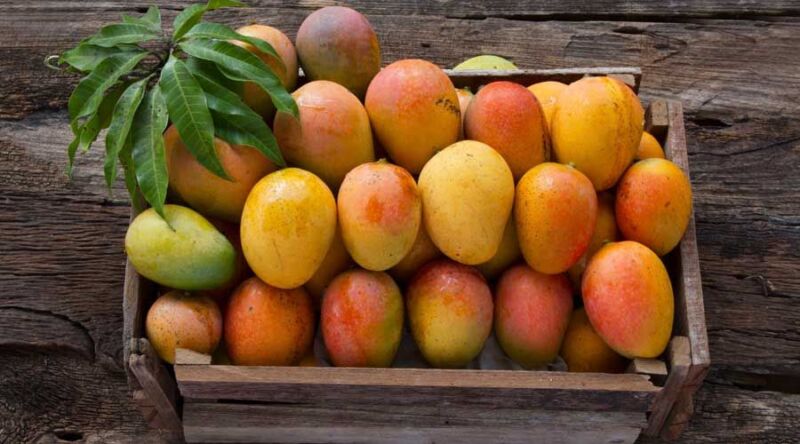
Fazli Mango, primarily cultivated in Bangladesh and West Bengal, India, is renowned for its size and distinct flavour. It is often called the “King of Mangoes” in these regions.
Fazli Mangoes are highly sought after for their suitability in making mango jams and preserves. They are also exported to various countries, allowing mango enthusiasts worldwide to savour their unique tastes.
While Fazli Mangoes may not be as commonly available in international markets as other varieties, they can sometimes be found in speciality grocery stores or online retailers specialising in tropical fruits. Checking local Asian markets or connecting with importers of South Asian produce may increase the chances of sourcing Fazli Mangoes.
Farkleberry
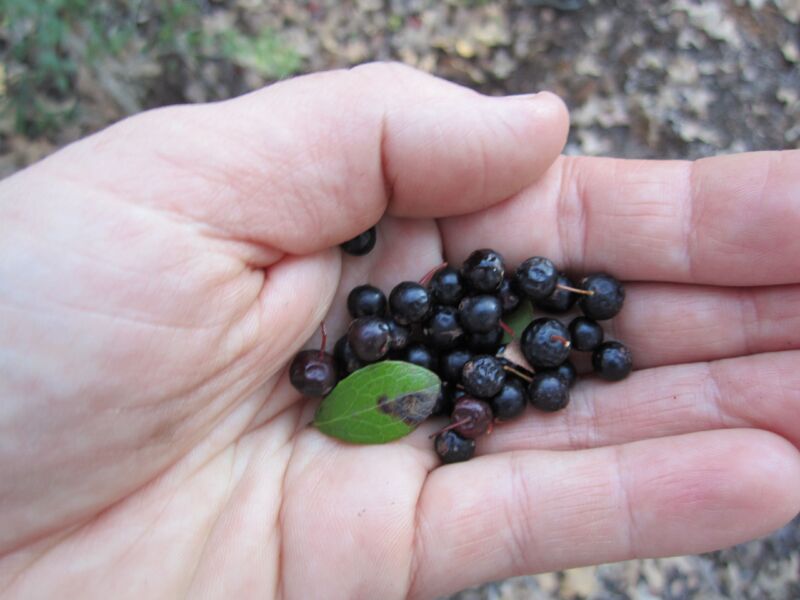
Farkleberry, scientifically known as Vaccinium arboreum, is a fruit-bearing shrub native to the southeastern United States. It grows in forests, woodlands, and along the edges of swamps, providing a foraging opportunity for those familiar with the fruit.
The Farkleberry’s dark blue to black berries are small and slightly tart. They are often used in jams, jellies, pies, and baked goods like cookies. Some enthusiasts even experiment with using Farkleberries in homemade wines or as a flavouring component in liqueurs.
Ripe Farkleberries are easily identifiable by their deep colour and plumpness. While they can be consumed raw, they are more commonly used in processed forms due to their tartness. Their versatility in recipes provides an opportunity for creative culinary endeavours and exploration of unique flavours.
Fox Grapes
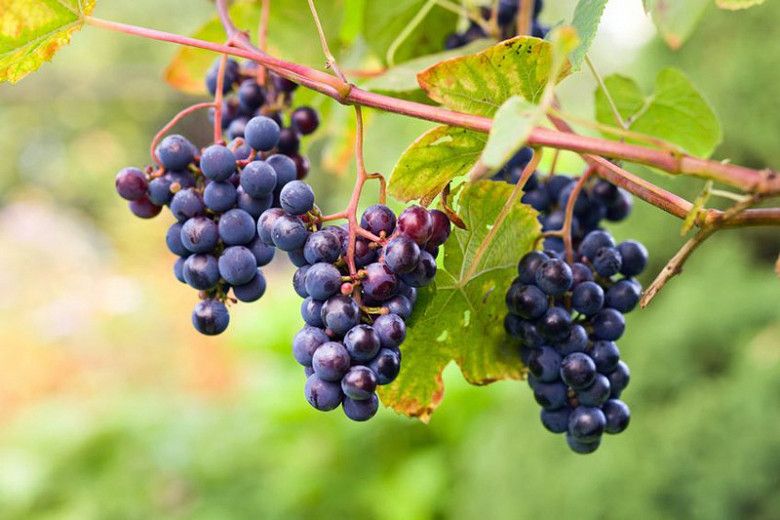
Fox Grapes, also known as Vitis labrusca, are native to eastern North America and are closely related to the cultivated Concord grape. They thrive in various climates and are particularly well-suited to regions with cold winters.
While Fox Grapes can be eaten fresh, their strong flavour and thick skin make them more suitable for winemaking. They are a key component in traditional American grape juice and grape jelly recipes, and their unique aroma and acidity lend themselves well to wines with distinct regional characters.
Due to their tartness and the presence of seeds, Fox Grapes are not typically consumed as table grapes. However, their rich flavour makes them popular for wines, juices, and grape-based products.
Fukushu Kumquat
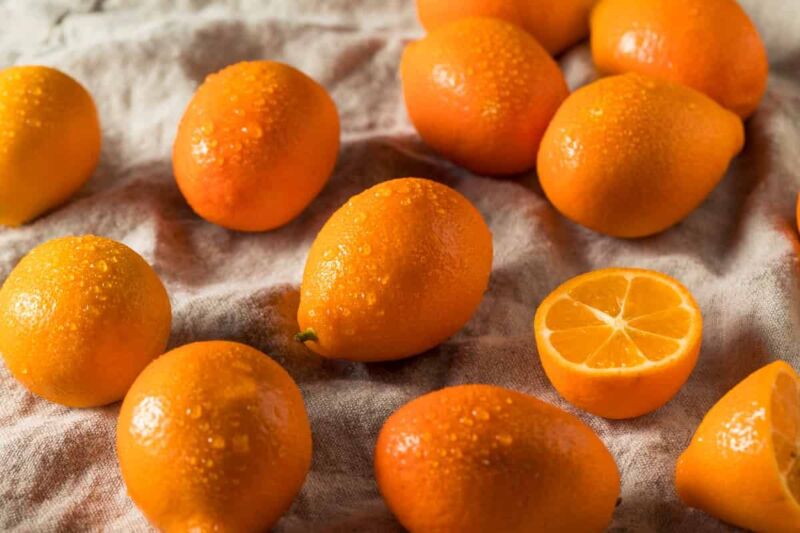
Fukushu Kumquat, or Nagami Kumquat, is a small citrus fruit native to Japan. It is primarily cultivated as an ornamental tree due to its attractive appearance and the decorative value of its petite, oval-shaped fruits.
Fukushu Kumquats have a tart and tangy taste with a slightly sweet peel. They can be enjoyed fresh, eaten whole (including the peel), or used in culinary creations. The peel’s zesty flavour makes it a popular ingredient in marmalades, chutneys, cocktails, and candied kumquats.
Kumquats, including the Fukushu variety, offer a unique and refreshing citrus experience. Exploring kumquat recipes, such as salads, marinades, dressings, or even kumquat-infused desserts, can provide a delightful culinary adventure that showcases the fruit’s distinctive flavour and versatility.
Five Flavor Berry
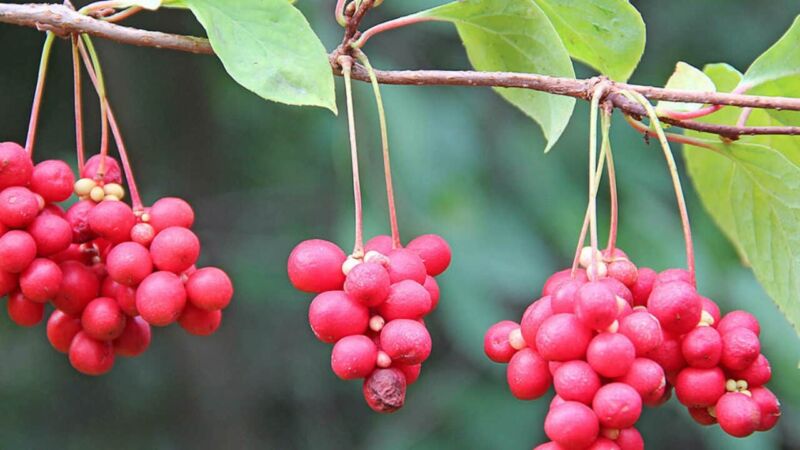
The Five Flavor Berry, scientifically known as Schisandra chinensis, is a fruit native to China.
The name derives from the notion that it covers the five primary tastes of sweet, salty, sour, bitter and umami. The Five Flavor Berry is known for its complex flavour profile. When fully ripe, the berries are said to have a sweet, sour, and slightly salty taste. They grow on woody vines and are highly valued for their adaptability to climates and resilience against pests and diseases.
In traditional Chinese medicine, the Five Flavor Berry is an adaptogenic herb with various potential health benefits. It supports liver health, promotes vitality, and improves cognitive function. The fruit is often used in herbal teas, tinctures, or as a dried fruit for culinary and medicinal purposes.
As you can see, a diverse array of fruits start with the letter F. From the Florida Cherry to the Five Flavor Berry; each fruit brings its unique characteristics, flavours, and culinary possibilities. Whether you’re a fruit enthusiast, a food lover seeking new flavours, or simply curious about the world of fruits, exploring these F fruits can be an exciting journey of discovery.
